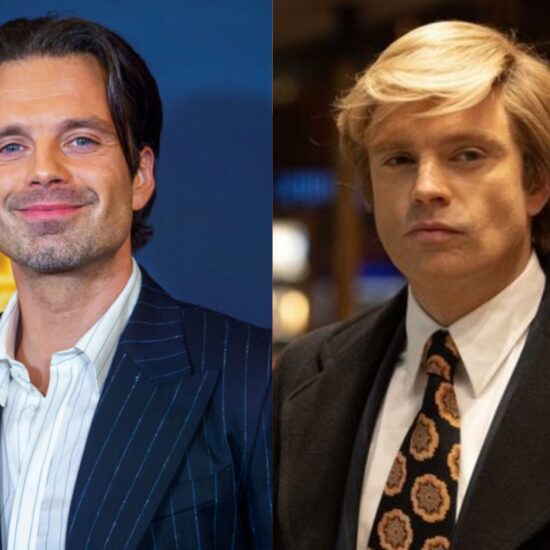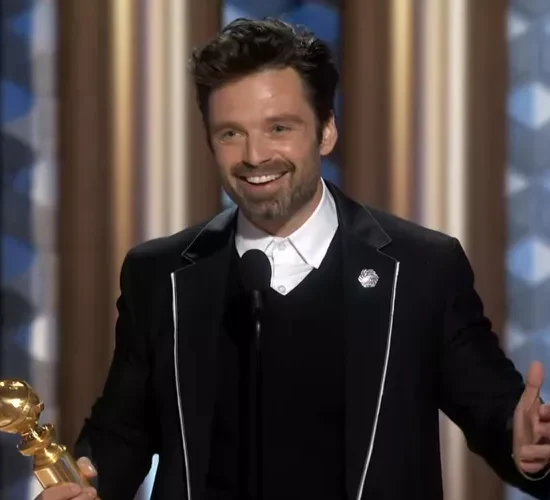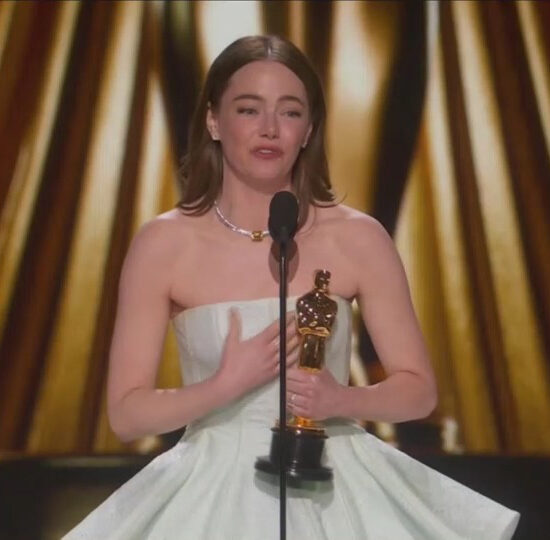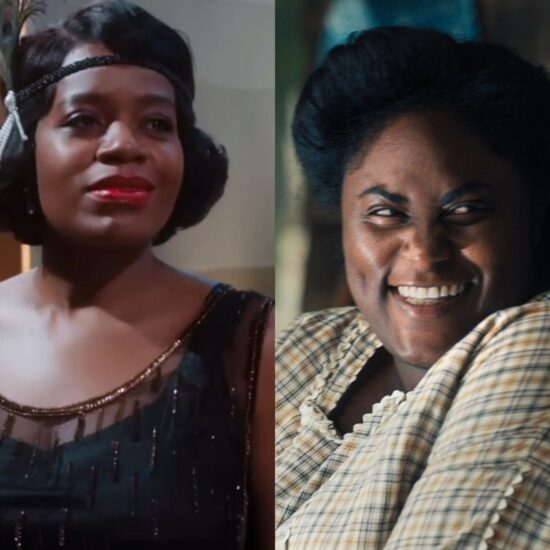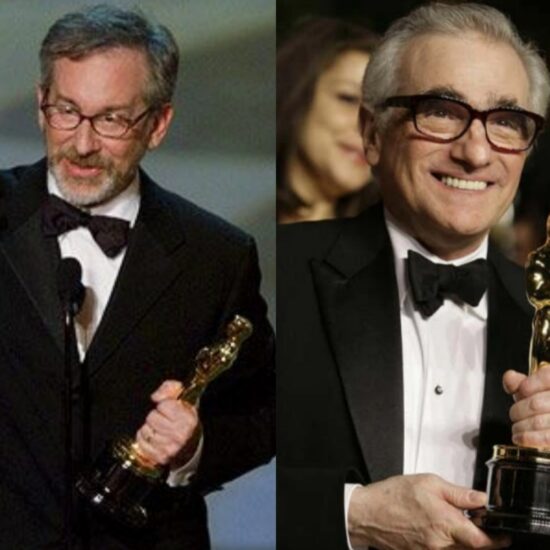
When you live by an elevated train track, near an airport, or across from a highway, then you live with a lot of noise; but even if sound is constantly hitting your ears, your brain tends not to notice it. Our capacity for filtering information is vast, and that filtering is often the mark of great sound design, too. In his work on “Nope,” sound designer Johnnie Burn needed to deliberately erase a lot of the environmental, rustling, incidental sounds that would be present in a California canyon to focus the audience on the slightly-off, uncanny sounds Burn leaves in, the ones that signal the appearance of that film’s antagonist.
But in “The Zone of Interest,” Burn, director Jonathan Glazer, and editor Paul Watts have an entirely different, almost opposite challenge. The film lives in the dissonance between the daily lives of the Höss family and the thing they are continuously choosing not to hear: mass murder conducted meters from their home, in Auschwitz, where Rudolf Höss (Christian Friedel) is commandant. We watch them continuously and determinedly numb themselves to the horrors being perpetrated that make their lives possible. They have blocked out the sounds — but the audience has not.
“I think even the crew in Poland occasionally would ask Jonathan, ‘When are you going to film the bad stuff?’ And he was like, ‘Don’t worry, Johnnie Burn is going to put some sound on that will make that work,’” Burn told IndieWire.
But “putting sound” over the distanced, surveillance-like vignettes of the Höss family going about their days is much, much easier said than done. Burn compiled a 600-page research document on everything from the types of trucks, trains, and planes that would’ve been moving through the industrial murder hub of Auschwitz, to witness testimony of what happened, day in and day out, at the camp.
No more than 80 yards from the garden that Hedwig Höss (Sandra Hüller) cultivates so meticulously was Block 11, the building where prisoners were taken to be “tried” for criminal offenses and executed. According to director Jonathan Glazer, there would be an average of 60 to 80 gunshots from the firing squad coming out of that block every day. Crafting sounds that create a sense of violence at scale without getting the audience to eventually tune them out was the constant tightrope that Burn had to walk.
And initially, Burn was sparring with the sounds coming from Auschwitz. But after a test screening, production designer Chris Oddy pulled Burn aside to tell him that the place was a lot busier than it was sounding. “It was an enormous amount of people and stuff coming and going every day, and I think Jon and I knew that and we’d done our research, but somehow, I don’t know, maybe it [felt] disrespectful, but we were too gingerly applying the sound and so we went away and we put a lot more in,” Burn said. “We settled on this idea of there being a constant sound of machinery and of course the crematorium; the next screening, it was just extraordinary because the script always had this juxtaposition in it, but to actually experience it was something quite different.”
In addition to a perpetual hum of machinery, there is constant sonic evidence of human suffering, the kind that Burn felt wouldn’t ever truly come across by bringing performers into a studio to loop background audio. Burns and his sound team spent months traveling all over Europe to find moments of extreme sound that would be closer to the mark.

“No matter how good an actor is, faking the pain of a severe injury, of fatality, is a very hard thing. And the film itself has such a documentary, natural, realistic vibe that anything remotely wooden is not going to work,” Burn said. “So [we tried] to hang around in places where we would hear things that were cries of pain or shouts of alarm. For example, [we went to] the Parisian riots that were happening a year and a half ago. It was just being in places where you hear those kinds of things that have the right sort of acoustic.”
Burn and his team created some sounds themselves, taking actors to a gravel quarry to capture the movement of large groups and the constant shuffle of guards and prisoners. Some shouts were from scenarios the sound team cooked up, based on the research. But Burn tried to ensure that most of the sound library created for the camp had that right sort of acoustic, and then placed the camp’s sounds so they would grab the audience.
“We decided that pretty much all of the film sound should live on the front wall of the theater, behind the screen,” Burn said. That directionality is constantly pulling our attention beyond the world that Rudolf and Hedwig want to focus on and making the audience occupy a horrifying nether space. It’s one where we are confronted with the power of human callousness; not that these characters are particularly awful people, but the juxtaposition of sound and image creates an intense, experiential sense of the “banality of evil” that can so often degrade into cliche when dramatized.
“There were two films here,” Jonathan Glazer told IndieWire. “There was the one you see and the one you hear. And if you close your eyes, you’ll see the one you hear.”

Creating the horror of Auschwitz in our minds with Burn’s sound design is indeed a whole other movie unto itself. But Glazer’s and Burn’s layering of that horror onto the film we see and forcing us to confront both simultaneously is what makes “The Zone of Interest” so powerful. “It was important that the sounds of the camp shouldn’t influence the actors at all, nor should they influence even the editing of that film. So Paul Watts’ picture edit was reasonably complete before we started adding any camp sounds,” Burn said. “Film two should not inform film one.”
That the two films don’t inform each other is gutting, and a way of leaning on film form to dramatize the sterile, routine, bureaucratic monstrosity of the Holocaust. Viewers intuitively sense the loss of hearing something we can’t see — and the effort of characters not reacting to something we feel. And yet we do see what the Hösses see, too; so we see how naturally and thoughtlessly we could become them. All it takes is to do what humans do: filter out the sounds around us.
“It’s a pretty grotesque reflection of us actually, that we’re able to see ourselves in them. They are seemingly and kind of frighteningly ordinary,” Glazer said. “It’s in that ordinariness that we see ourselves. And I wanted to serve that ordinariness somehow in the way that I put the film together. ”
Monica has a BA in Journalism and English from the University of Massachusetts and an MS in Journalism and Communications from Quinnipiac University. Monica has worked as a journalist for over 20 years covering all things entertainment. She has covered everything from San Diego Comic-Con, The SAG Awards, Academy Awards, and more. Monica has been published in Variety, Swagger Magazine, Emmy Magazine, CNN, AP, Hidden Remote, and more. For the past 10 years, she has added PR and marketing to her list of talents as the president of Prime Entertainment Publicity, LLC. Monica is ready for anything and is proudly obsessed with pop culture.









